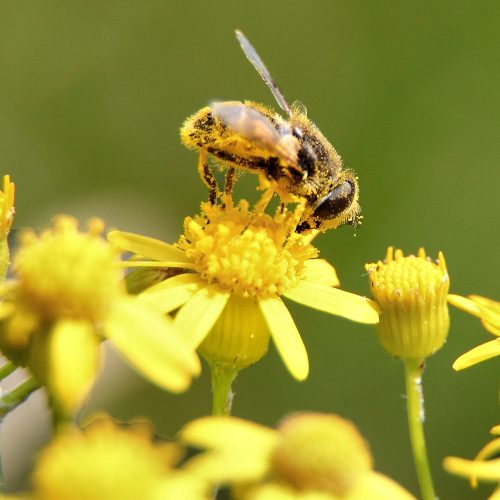Cycads are easy to take care of, fun to look at, and will surely add interest to your backyard landscape.
Over two hundred million years ago, cycads could be found in every continent and made up about 20% of the world’s plants. Because they are so ancient, they are known as “living fossils.” These mighty trees survived whatever wiped out the dinosaurs, 5 ice ages, and adapted to life on a completely different earth.
Currently, there are about 300 known cycads, with new species being discovered all the time. The problem, however, is that many existing species are going extinct due to habitat destruction as well as harvesting of the wild plants for selling.
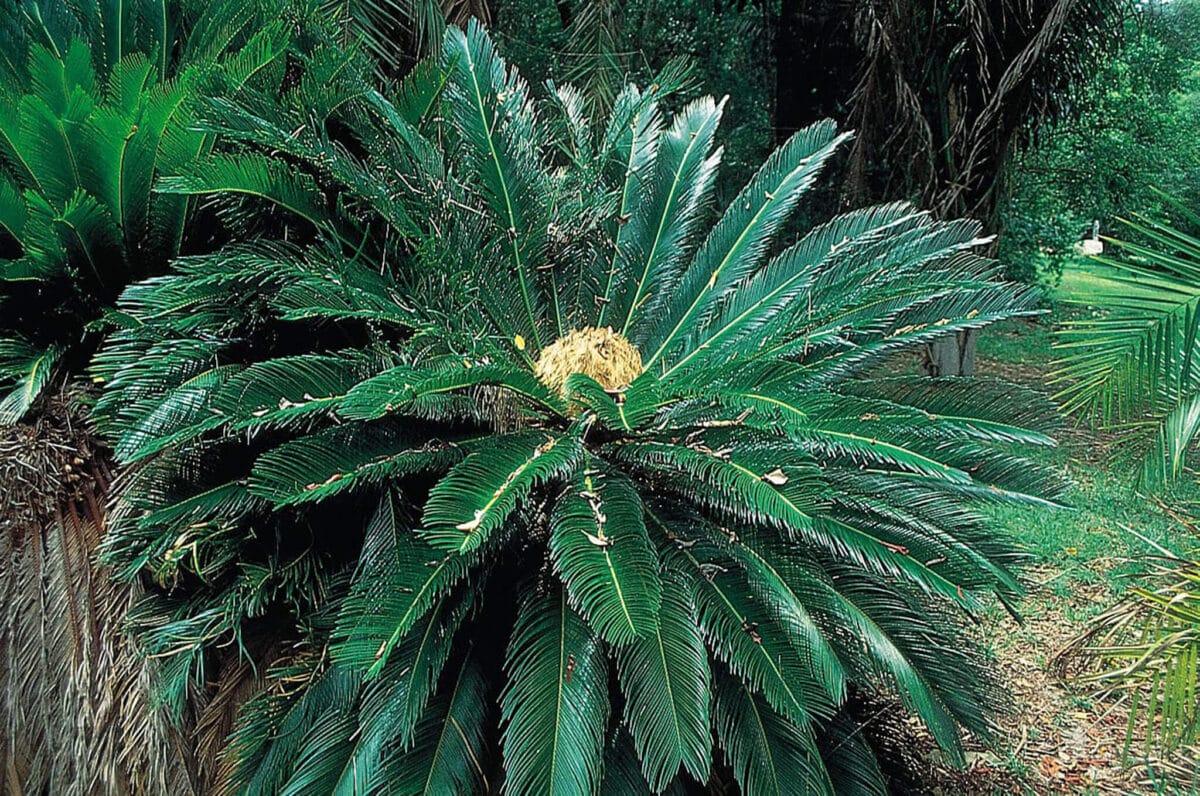
Cycad plants are hardy, cone-bearing plants that grow in a medium with good drainage, such as sand or hard rock. This is because many are prone to root rot. They are dioecious, which means there are separate male and female plants.
When planting a cycad in your yard or landscape, it is best to transplant a young plant from a container during the spring. Generally, cycads are very adaptable to the garden environment and can be grown in diverse conditions. Indoor cycad plants love natural light and should be fertilized occasionally. Because these plants occupy a variety of habitats, you should seek out a cycad suited to your specific environment.
Fun fact: Cycads are actually more closely related to pine trees than they are palms, despite the resemblance.
If you live in a very cold area, you should consider certain species of Dioons or Macrozamias. Macrozamias are fairly large, growing up to 15 feet across. Some develop large, palm-like trunks up to 20 feet tall or more. If your yard is partially shaded, maybe go with a cycad in the Ceratozamias or Zamias genus. For those of you lucky enough to live along the coast of Southern California, there is a large variety of cycads you can grow.
But before we explore the cycad plant options for your backyard, let me tell you about one amazing cycad that has made the headlines due to its unique situation.
Table of Contents
Encephalartos Woodii – The Loneliest Cycad in the World
First discovered in 1895 by John Medley Wood in Ngoye Forest in Zululand, Southern Africa, four lonely Encephalartos woodii trees sat on a steep slope at the edge of the woods. Wood immediately noticed these trees looked quite different than the others.
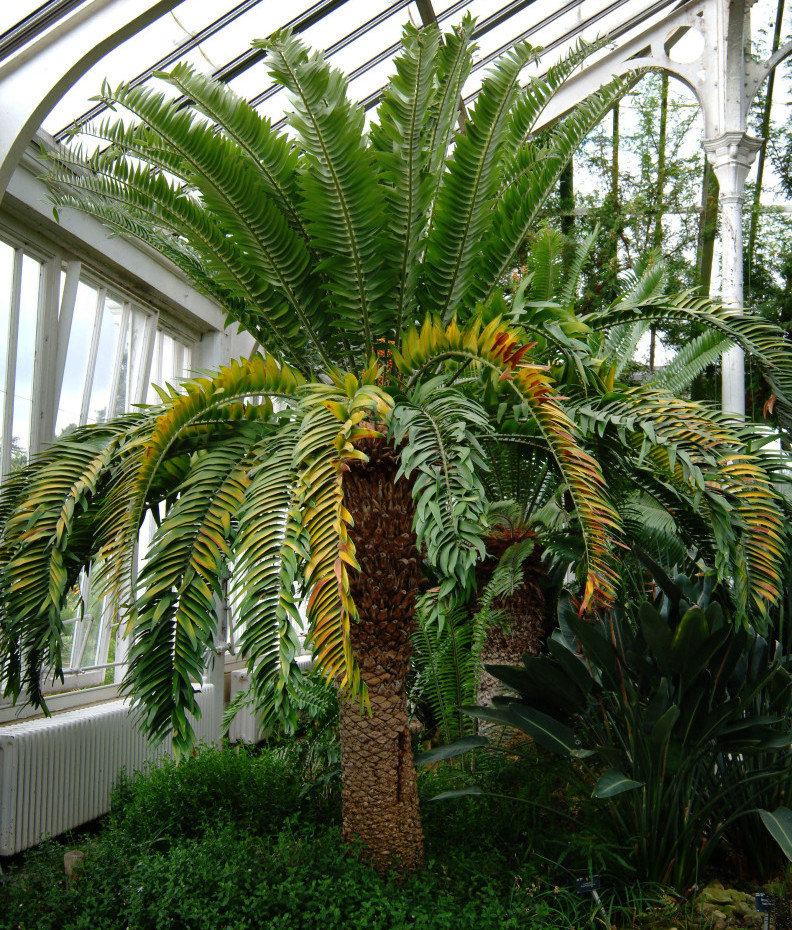
Wood, perhaps having a botanist’s intuition regarding the profound nature of this singular cycad, collected stems and sent them back to London in 1903. A single stem can live anywhere between 500 to 1200 years, depending on the conditions upon which it is kept.
These are the only E. woodii plants that have ever been found and all of them are male plants originating from a single plant. The other trunk specimens died after multiple attempts to transport them around the world. To this date, no other specimens of E. woodii have ever been found.
E. woodii leaves are dark glossy green with a gracefully arching shape, giving this cycad a dense umbrella-shaped crown, even in young specimens. The cycads had thick trunks and a splay of palm fronds at the top. It can reach up to 19.5 feet in height, with a trunk diameter of nearly 3 feet around. The leaf bases are so compressed at the base of the trunk by the weight it supports, that the trunk is unusually smooth.
People have called this the loneliest plant on earth because it may well have been the last surviving wild example of an ancient cycad, dating back to the age of the dinosaurs.
The cycad trees have been pushed into smaller spaces over the centuries by new species of trees. And the result of competing with the taller conifers and flowering plants is the e. woodii being pushed to the brink of extinction.
The E. woodii stems collected by Dr. Wood stayed in London for the next 98 years at the Palm House at the Royal Botanical Gardens at Kew. Since the original stem was collected, botanists around the world have grown somewhere between 300 and 600 E. woodii plants to study and try to reproduce.
Unfortunately, the E. woodii cycad cannot self-fertilize. The cycad grows a cone filled with pollen, which attracts insects and birds to help it pollinate with other trees of its kind. The last tree in London is a male, with no female to be found – yet. Without a female cycad, the E. woodii cannot produce seeds or new trees. All hope is not lost, because there are a few projects underway to remedy the situation.
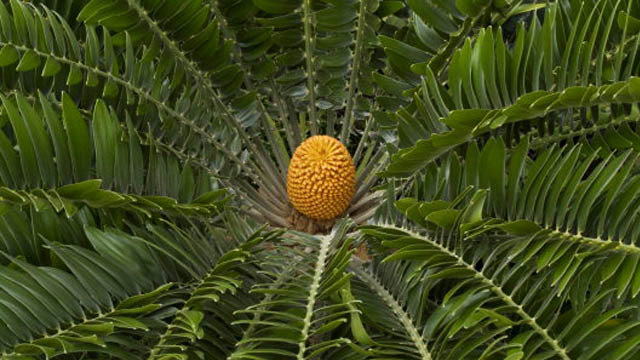
The tree can be cloned, or hybrids created and sold in stores. Perhaps once we learn more about spontaneous sex change in plants, botanists can use the science to help this lonely specimen reproduce. There is still the hope that a female plant is in the Ngoye forest somewhere and botanists in exploring the area always keep an eye open for one.
Next time you’re in London, make a visit to the Royal Botanical Gardens and pay homage to a prehistoric tree, lonely as can be.
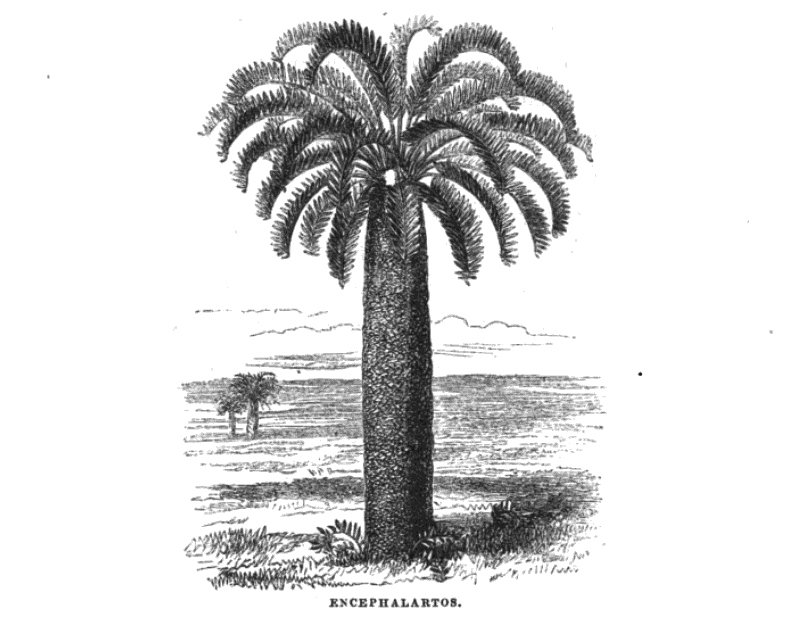
Other Incredible Cycads
Sago Palms
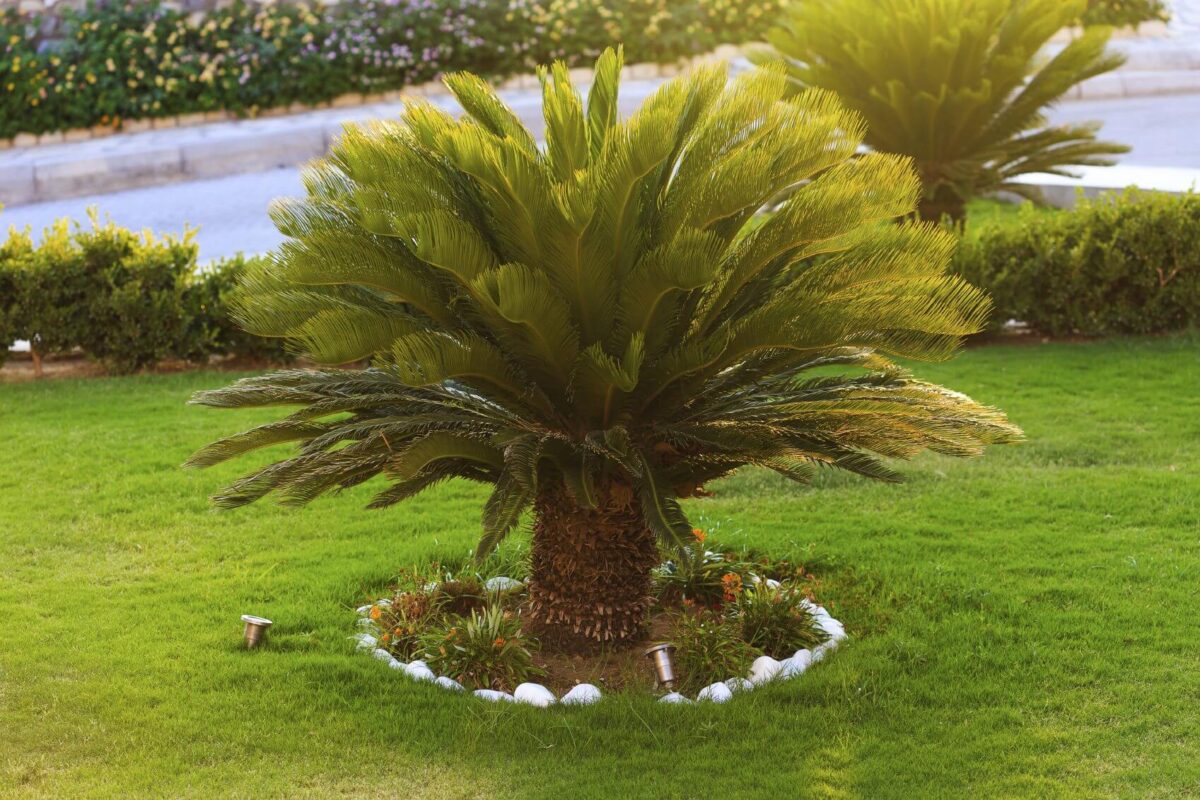
This is one cycad you’ve most likely heard of. Sago palms are popular slow-growing houseplants that love bright light and well-drained soil. They grow to 3-5 feet and usually have a long life. Their thin, feathery leaves are fun to look at, but will certainly poke you if you get too close. Sago Palms are sensitive to root rot and given enough nutrients female plants will bloom once only every three years.
BEWARE: All parts of this plant are considered toxic to both humans and pets if ingested.
Blue South African Cycad – Encephalartos horridus
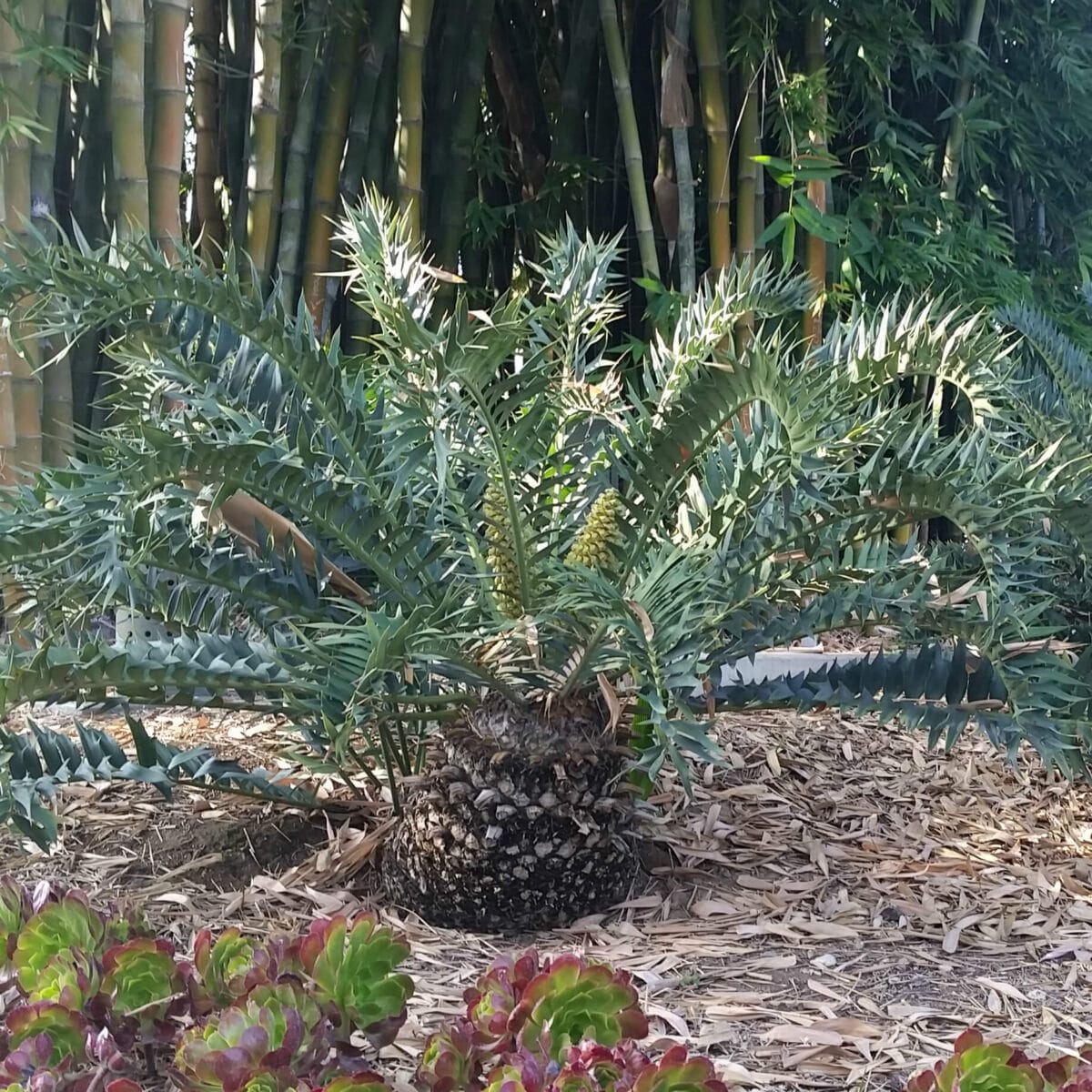
Encephalartos horridus is a blue cycad native to South Africa. It is usually small (about 3 feet in diameter but has been known to reach 6 feet wide) and stout. E. horridus likes the sun and heat, and is fairly tolerant to cold. Like many other types of cycads, E. horridus prefers course, well-draining soil and minimal water.
E. horridus is popular among cycad enthusiasts because of its silver-blue color and unique curled leaves that come to a sharp point. The trunks are thick and have a woody texture when mature, and they grow a large cone in the center of the plant.
They are sought-after cycads and are often times hard to come by, which means that they are fairly expensive when you do find one. That said, this is a low-maintenance plant that will definitely serve as a conversation starter in any garden.
Zamia Cardboard Palm – Zamia furfuracea
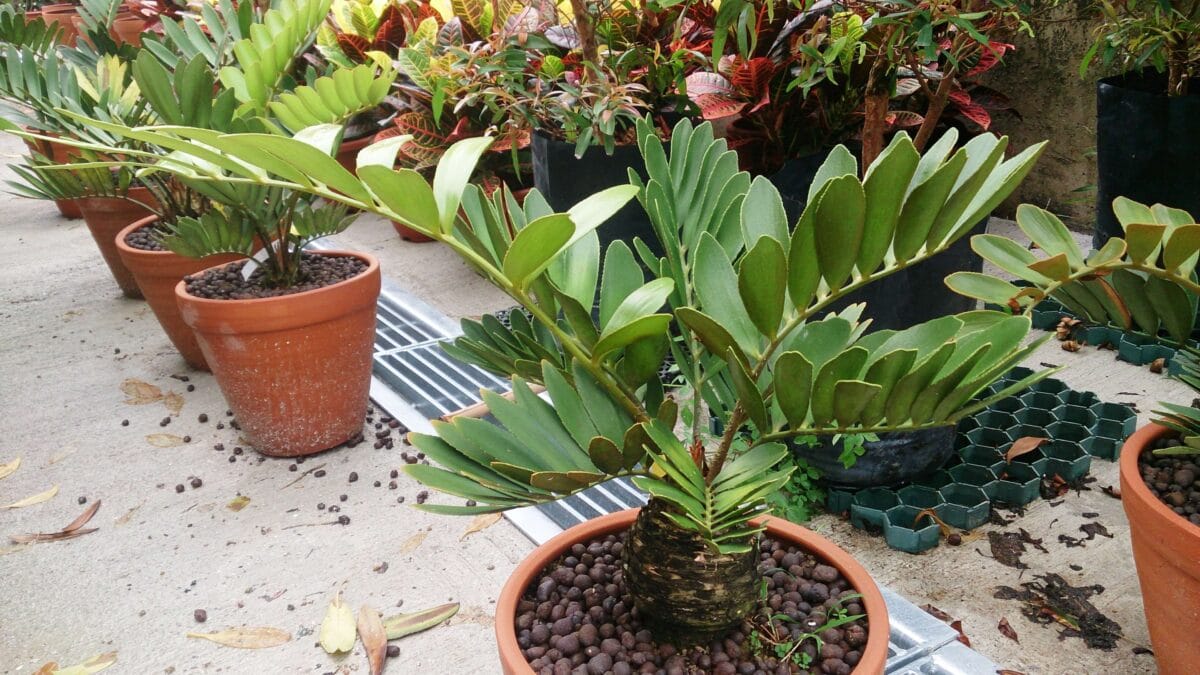
Native to Mexico, the Cardboard Palm is one of those trendy-looking houseplants that guests are sure to be jealous of. Z. furfuracea has round leaves with a thick stem common to cycads, slowly grows low to the ground, and may spread 3 to 4 feet. They grow well indoors when potted in a container with excellent drainage and placed in bright light, or outdoors in USDA zones 9 through 11.
The trunk stores moisture in times of drought, and it does not require excessive amounts of water. Soak the plant once a week in the summer and once every two weeks in the winter and fall. Cycads also benefit from the occasional addition of fertilizer.
Whichever plant you choose to showcase in your home landscape, each unique cycad will be fodder for great conversation.
Want to grow your own cycad? Amazon has cycad seeds available.
[amazon box=”B08D96MZ3F” template=”list” grid=”1″ description=”none” button=”none” link_icon=”none”]
Pin this!

- About the Author
- Latest Posts
I strive to paint vivid landscapes with my words, bringing the magic of far-off lands and enchanting aromas to life for my readers. Combine passion for exploration and the art of gastronomy in an unending ode to the senses. When I’m not traversing the globe, I find solace in the earth beneath my fingertips, tending to my garden and working on projects around my verdant oasis. MK Library serves as a beacon, guiding fellow travelers and homebodies alike to embrace sustainability, nurturing both our planet and our souls with purpose. Full Bio.




